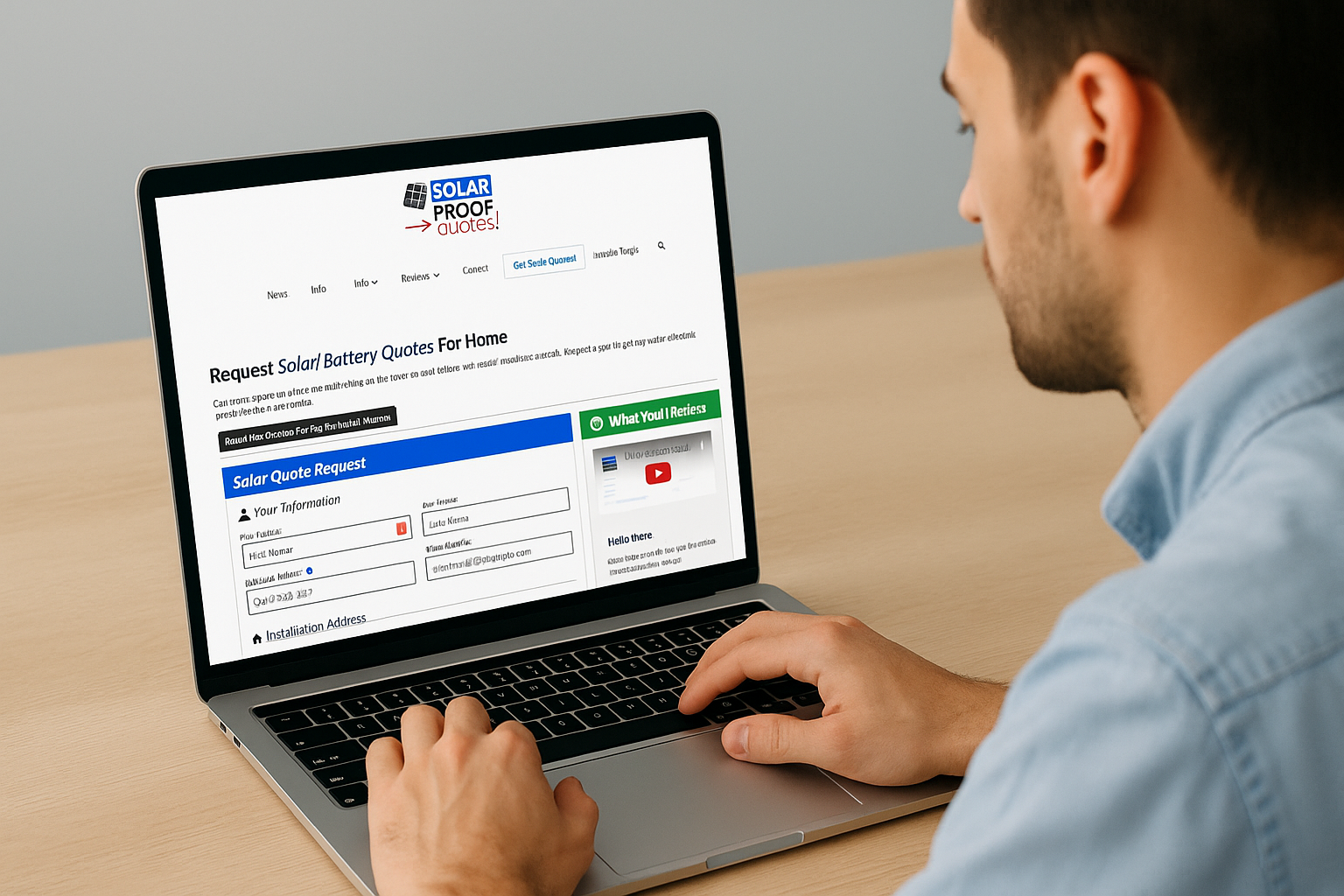Switching to solar power is one of the best financial and environmental choices you can make — but getting reliable solar quotes can feel overwhelming. With so many companies, technologies, and price ranges, it’s hard to know who to trust.
Fortunately, by following a few smart steps, you can find quotes that are accurate, transparent, and tailored to your home’s energy needs. This guide will show you exactly how to do that, so you can make a confident decision and avoid costly mistakes.
Step 1: Understand Your Solar Potential
Before requesting quotes, it helps to know what kind of system will suit your home. Factors such as your roof direction, shading, and daily energy usage all influence how much solar power you can produce.
Start by checking your home’s solar potential with the official government guide:
Energy.gov.au – Size Your Solar System
This tool explains how to calculate your ideal system size and estimate potential savings. Once you know roughly what you need, you’ll be ready to compare quotes more accurately.
Pro Tip: Note down your average electricity bill and energy usage in kWh — installers will use this to tailor your quote.
Step 2: Get Quotes From Multiple CEC-Accredited Installers
One of the most important things you can do is to compare multiple quotes from Clean Energy Council (CEC)–accredited installers. Accredited professionals follow strict safety and performance standards and can access federal rebates.
Avoid dealing with door-to-door salespeople or companies that pressure you into same-day decisions. Instead, request quotes through trusted platforms like Solar Proof, which connects you only with verified local installers.
Start comparing today: Request Solar Quotes
By getting at least three detailed quotes, you’ll quickly see what’s fair and what’s inflated — helping you save money without sacrificing quality.
Step 3: Check What’s Included in the Quote
Reliable solar quotes are transparent and itemised. Each quote should clearly state:
- System size (kW) and expected yearly energy output (kWh)
- Panel brand and model (e.g., Trina, Jinko, REC)
- Inverter brand (Fronius, Sungrow, Enphase)
- Battery details (if applicable)
- Total cost including STC rebates and GST
- Warranty details for panels, inverter, and workmanship
If something looks unclear — for example, “Tier 1 panels” with no brand listed — ask for clarification before signing anything. Transparency is a sign of a professional installer.
Step 4: Verify Credentials and Experience
Not all installers are equal. To ensure your system performs reliably for decades, check the installer’s background.
Look for:
- CEC accreditation number
- Years of experience installing systems in your region
- Customer reviews and Google ratings
- After-sales service and support policies
Furthermore, reliable installers will visit your property (or assess via drone imaging) to confirm roof layout, switchboard condition, and energy goals before finalising your quote.
Step 5: Compare Performance, Not Just Price
While it’s tempting to pick the cheapest quote, that approach often leads to poor-quality components and unreliable systems. Instead, focus on value and performance.
Ask these questions when comparing:
- Which system offers the best output-to-cost ratio?
- Are the panels and inverters from reputable global brands?
- What is the payback period based on your actual energy use?
Sometimes a slightly higher-priced quote provides a far better return because of superior warranties and efficiency. Remember: the best deal is the one that saves you more over time.
Step 6: Confirm Warranties and After-Sales Support
Reliable solar quotes always include warranty details. Look for:
- Panel warranty: 25 years (product and performance)
- Inverter warranty: 10 years or more
- Workmanship warranty: at least 5 years
Additionally, make sure the installer provides ongoing support. A company that offers monitoring tools and after-installation checks is more likely to respond if something goes wrong.
Bonus Tip: Ask if your system includes remote monitoring. This lets you track production and identify issues early — ensuring long-term efficiency.
Step 7: Sign Confidently and Schedule Installation
Once you’ve verified your quotes, reviewed the warranties, and confirmed credentials, you’re ready to choose your installer. Reliable providers will send a written agreement outlining payment terms, timelines, and installation details.
After installation, they should:
- Provide a grid-connection approval
- Register your system for rebate eligibility
- Help you set up monitoring software
By working with professionals, you’ll avoid delays and ensure your system starts performing at its best from day one.

